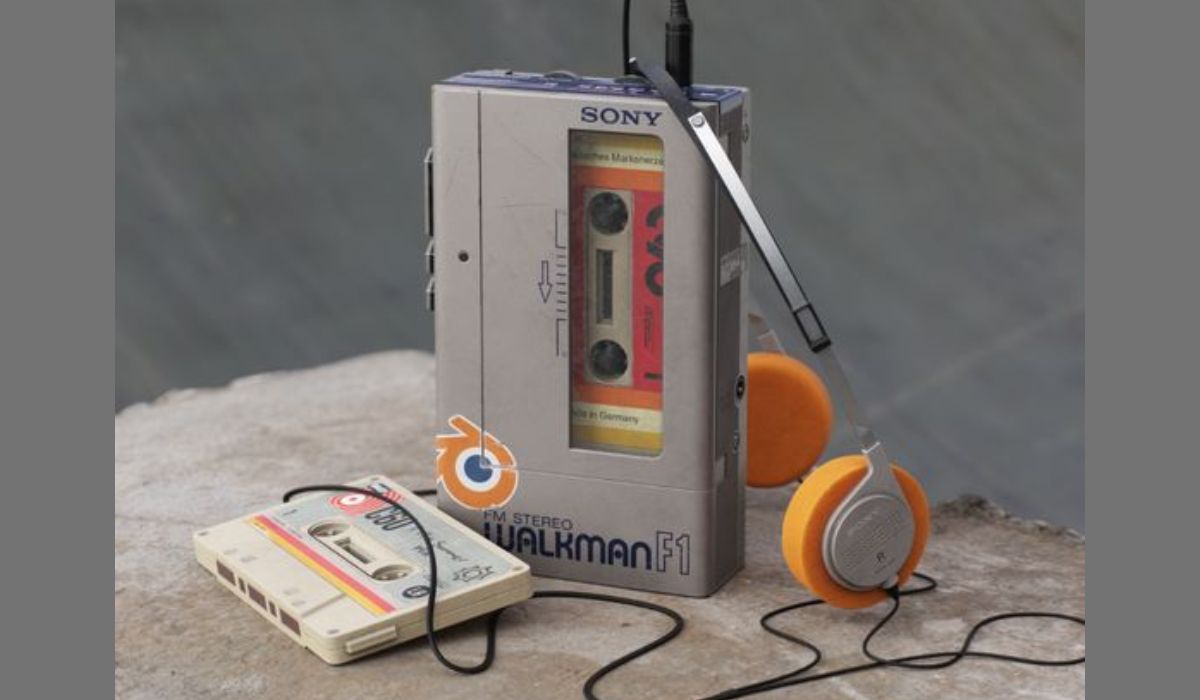It’s easy to forget the early days of portable music in this digital era, when music streaming services and smartphones rule. When Sony released the Walkman in 1979, it changed the way people listened to music forever. This essay follows the development of the Walkman and analyzes its effects on society and technology.
The Invention of the Walkman
Sony co-founder Masaru Ibuka desired a means to listen to operas on long flights, so he came up with the concept of a portable music player to fulfill this need. As a result, a portable cassette player called the Walkman was created so that people could take their music with them wherever they went. The introduction of the Walkman heralded a new era in portable music listening.
The Portable Music Revolution
The popularity of the Walkman led to a sea change in the way that people listened to music. People could now take their favorite tunes with them wherever they went, rather than being limited to listening to them at home or in concert halls. The Walkman symbolized the decade of the 1980s because of the greater acceptance of personal musical expression it enabled.
Evolution and Advancements
The Walkman evolved alongside the advancement of technology. Sony kept coming up with new features to improve its products, such as auto-reverse, bass boost, and longer battery life. As the music industry and consumer preferences evolved, later models incorporated support for CDs, MP3s, and digital formats.
Iconic Models of Walkman
Various iterations of the Walk man have become cultural icons. Many portable music players came and went, but the Walk man II, Sports Walkman, and Discman stood the test of time. These gadgets were more than just a way to improve one’s music listening experience; they also became a way to express one’s personal style and taste.
The Cultural Impact
The Walkman changed the face of popular music forever. It shifted people’s tastes in music and clothes and affected their connections with others. The headphones themselves became a cultural emblem of independence and individualism as people embraced the idea of listening to music privately.
Walkman’s Decline and ResurgWalkmanence
The Walk man was challenged by the proliferation of digital music players and smartphones. A drop in sales signaled the end of the Walkman’s golden age. However, the Walk man has recently seen a resurgence in popularity as a result of a trend in retro technology.
Modern-Day Nostalgia
Having a vintage Walk man is now a nostalgic treat for many people. The cassette player and the practice of making mixtapes have a nostalgic significance that cannot be replicated by modern digital technology. The demand for pristine Walkmans has increased in vintage electronics shops and on the internet.
The Influence on Music and Technology
The Walkman revolutionized not only music listening habits but also the music industry as a whole. Because of the limitations of the cassette medium, musicians began composing and recording shorter songs. The Walkman’s popularity also spurred more developments in portable music players and established the framework for today’s music streaming services.
The Legacy of Walkman
It is impossible to overestimate the significance of the Walk man to culture, technology, and music. It was a game-changer for music listening, paving the stage for the digital music revolution of today. The Walkman, despite its waning popularity, is a timeless reminder of the pleasure of listening to music on one’s own terms.
Conclusion
The evolution of the Walk man from a portable tape player to an international phenomenon is a tribute to the value of new ideas. Even in the digital age, its effects on art and science are still being felt. The Walk man will always be remembered as a cultural icon representing the universal yearning for music on the go.
FAQs
When was the Walkman first introduced?
Sony first debuted the Walkman in 1979.
Are there modern versions of the Walkman available?
While the original Walkman is no longer manufactured, there are newer models that pay homage to its groundbreaking capabilities and appearance.
Did the Walkman support digital music formats?
Yes, digital file formats like MP3 were supported by subsequent variants of the Walkman.
What made the Wal’kman a cultural icon?
The portability and versatility of the Walkman made it an iconic product of the 1980s.
Is the Wal’kman still popular today?
The Walkman’s not as common as it once was, but it’s been enjoying a renaissance among vintage music fans.











